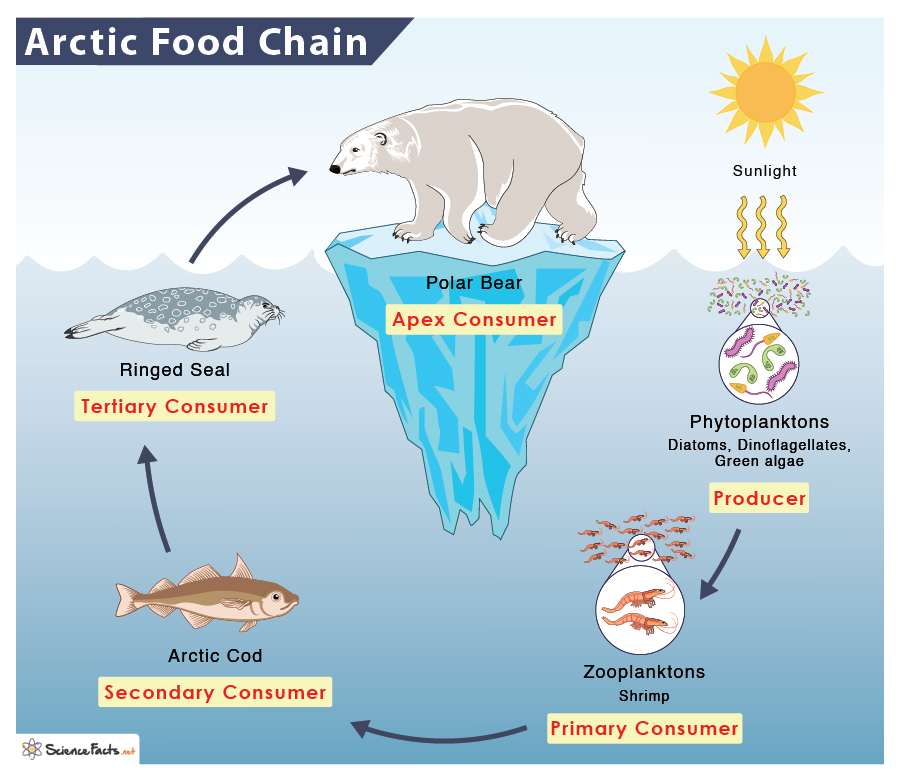Arctic Food Chain
An arctic food chain is found in the Arctic Circle that surrounds the North Pole. It experiences freezing temperatures, often below -50° F.
Like other food chains, the different trophic levels of an arctic food chain are producers, primary consumers, secondary consumers, and apex predators.
Here, we will explore the arctic food chains of the ocean and the grassland. While the terrestrial food chain is quite diverse, the oceans remain frozen with ice. Despite these challenges, oceans also inhabit various small and large aquatic organisms.
Ocean Arctic Food Chain
The tiny, microscopic organisms, the phytoplanktons (diatoms, dinoflagellates, green algae, and some autotrophic bacteria), are the producers in the arctic food chain. They prepare their food using sunlight. The primary consumers in the Arctic are zooplanktons which include krill, and pelagic crustaceans like copepods. Arctic cob and harp seal are secondary consumers that eat smaller fish like Arctic cod, Arctic char, and some crustaceans.
The tertiary consumers, such as leopard seals, feed on the secondary consumers. Polar bears and Orca whales act as tertiary or apex (quaternary) consumers, depending on their participation in the food chain. Polar bears feed on and eat seals and fish, while Orca whales feed on small fishes and larger fishes like whales and seals.
When the predators die, decomposers in the soil mineralize their bodies, releasing the nutrients that the producers readily take up.
Terrestrial Arctic Food Chain
Small moss-like plants, the lichens, are the producers of this food chain. They are found on the ocean floor and attached to rocks and other surfaces. Shrubs, seaweeds, seagrasses, and microscopic algae in the ground are also producers. Grazing animals like rabbits and caribou feed on the producers for their livelihood. The arctic fox feeds on grazing animals and thus is a secondary consumer. During winters, the arctic fox follows the polar bears, picking up the pieces. Tertiary consumers include polar bears, wolves, and eagles, which prey on secondary and primary consumers.
Arctic Tundra Food Chain
The lichens, mosses, and small shrubs constitute the producers of the arctic tundra food chain. Plant-eating animals (herbivores), such as caribou, musk ox, lemmings, and arctic hares, act as primary consumers. Secondary consumers are mostly omnivores from different trophic levels of the food chain. Caribou, Musk Ox, and Arctic hares are some secondary consumers feeding on producers and herbivores. Polar bears, arctic foxes, and wolves feed on primary and secondary producers and are, thus, apex consumers.
-
References
Article was last reviewed on Tuesday, December 12, 2023




